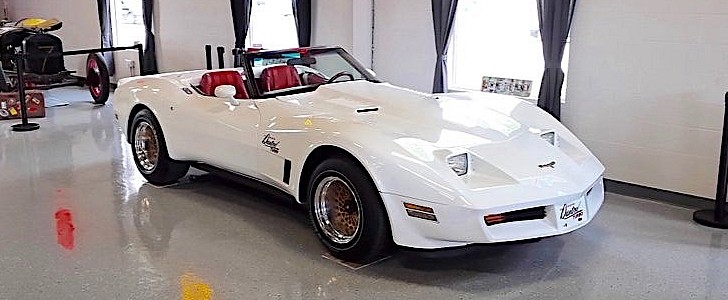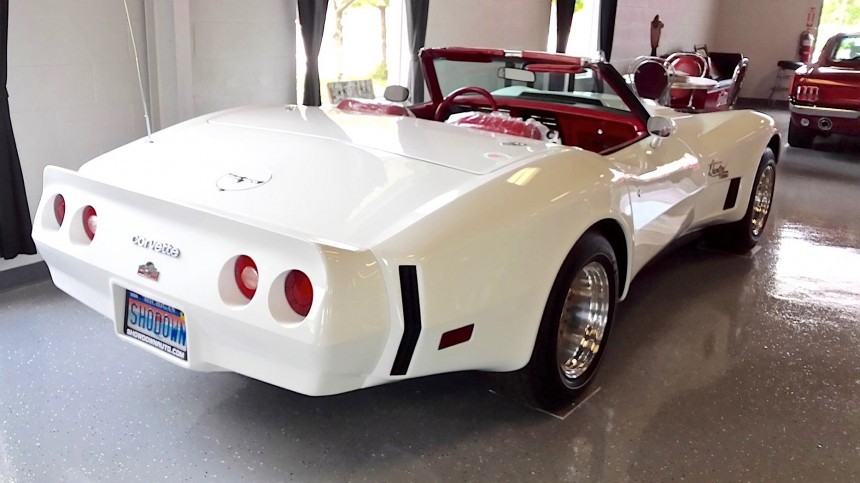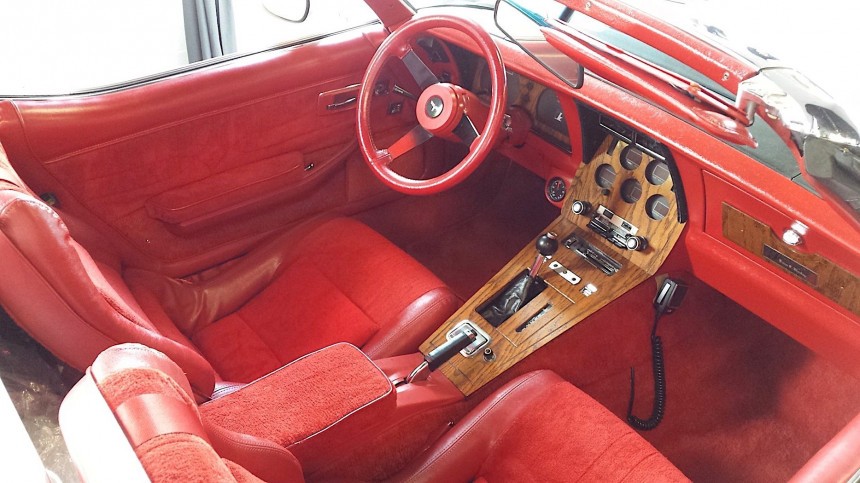Refusing to let Corvette forget its past, Chief Engineer Zora Arkus-Duntov came out of retirement to build one final masterpiece. With a little boost and big styling, he offered a shining light during Chevy’s darkest days.
It must have been a flashback for the old man. In 1979, he learned that California was castrating his creation, and something had to be done. For 1980, the Left Coast banned the 5.7-liter V8, forcing Corvette to adopt Camaro’s inept 5.0-liter. With only 165 horsepower, it was just as pathetic as the six-cylinder 1954 model that launched Duntov's career at Chevrolet.
A quarter-century earlier, he happened to see an early Vette on display at the Waldorf-Astoria hotel, being underwhelmed by its dismal credentials. This prompted him to write “The Letter”, a harsh critique of Chevy’s management who didn’t have a clue how to build or sell performance cars. They responded by offering him a job, and he oversaw every detail of Corvette until retiring in 1975.
GM had dumped millions into developing rotary engines and wild concepts like the “Aerovette” while the tooling for the original small block Chevy hadn’t been updated in two decades. Making more power would be the first step, but it wouldn’t be as easy as the old days. After barely escaping the Nazis in 1939, Zora and his brother emigrated to NY where they invented an overhead cam conversion for the Ford Flathead V8, more than doubling its power.
The laws stated he couldn’t touch the internals, so it was time for turbos. Leaving the carburetor in the stock location, an innovative intake manifold fed the air/fuel mix into a turbocharger then back to the cylinder heads. Draw-through turbo systems don’t need intercoolers because the fuel suspended in the mixture prevents detonation, but they do have a few bottlenecks that generaly limit their output. While it had incredible lag, Zora was able to add 4 lbs of boost to reach a supposed 300 horsepower.
For incredible looks he turned to ACI, the fiberglass experts who built the widebody C3 Greenwood cars that dominated Le Mans in ‘76. Each car started life as a coupe with t-tops, and emerged as a convertible that’s 6” wider than before. Instead of individual panels connected by bonding strips, the rear deck, doors and front end used massive one-piece molds.
This was expensive, but it offered better quality control than the tired tooling GM was using. A new hood was needed to keep the turbo cool, along with braided stainless lines for the fuel, A/C, and emissions hoses. Each car was treated to several coats of white along with staggered 15” wheels (10” wide front, 11” wide rear).
Seeking to make the experience worthy of the power, Zora turned to Bilstein for a suspension tuned to his specifications. There was room for improvement, as the chassis was mostly unchanged since 1963. That’s why each car also received a new steering box that cured Corvette’s lack of feedback. To match the color combination from 1953, every car was loaded with a red leather interior along with all power options. The rarest of all is the factory AM/FM/CB radio made popular by trucking culture of the late 70’s.
Prospective buyers could enjoy a digital boost gauge, impressive handling, and unique looks, but it wasn’t enough. Without the option of a manual transmission, drivers would have to floor the pedal to force a downshift while waiting for the turbo to spool.
Changing the torque converter or the differential gears would have helped, but this would have provoked the EPA to examine the project.
Even if the engine made its advertised power, buyers couldn’t justify an additional $12,000 for the conversion. Although they planned to build 200 cars, a lot less were made (anywhere between 32 and 86), making the Duntov Turbo a rare piece of Corvette history.
A quarter-century earlier, he happened to see an early Vette on display at the Waldorf-Astoria hotel, being underwhelmed by its dismal credentials. This prompted him to write “The Letter”, a harsh critique of Chevy’s management who didn’t have a clue how to build or sell performance cars. They responded by offering him a job, and he oversaw every detail of Corvette until retiring in 1975.
GM had dumped millions into developing rotary engines and wild concepts like the “Aerovette” while the tooling for the original small block Chevy hadn’t been updated in two decades. Making more power would be the first step, but it wouldn’t be as easy as the old days. After barely escaping the Nazis in 1939, Zora and his brother emigrated to NY where they invented an overhead cam conversion for the Ford Flathead V8, more than doubling its power.
For incredible looks he turned to ACI, the fiberglass experts who built the widebody C3 Greenwood cars that dominated Le Mans in ‘76. Each car started life as a coupe with t-tops, and emerged as a convertible that’s 6” wider than before. Instead of individual panels connected by bonding strips, the rear deck, doors and front end used massive one-piece molds.
This was expensive, but it offered better quality control than the tired tooling GM was using. A new hood was needed to keep the turbo cool, along with braided stainless lines for the fuel, A/C, and emissions hoses. Each car was treated to several coats of white along with staggered 15” wheels (10” wide front, 11” wide rear).
Prospective buyers could enjoy a digital boost gauge, impressive handling, and unique looks, but it wasn’t enough. Without the option of a manual transmission, drivers would have to floor the pedal to force a downshift while waiting for the turbo to spool.
Changing the torque converter or the differential gears would have helped, but this would have provoked the EPA to examine the project.
Even if the engine made its advertised power, buyers couldn’t justify an additional $12,000 for the conversion. Although they planned to build 200 cars, a lot less were made (anywhere between 32 and 86), making the Duntov Turbo a rare piece of Corvette history.













